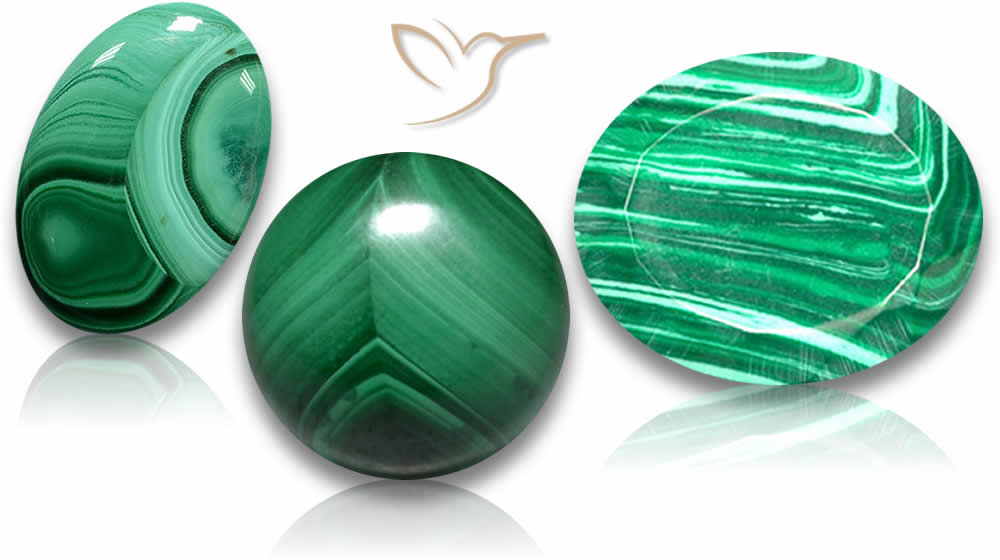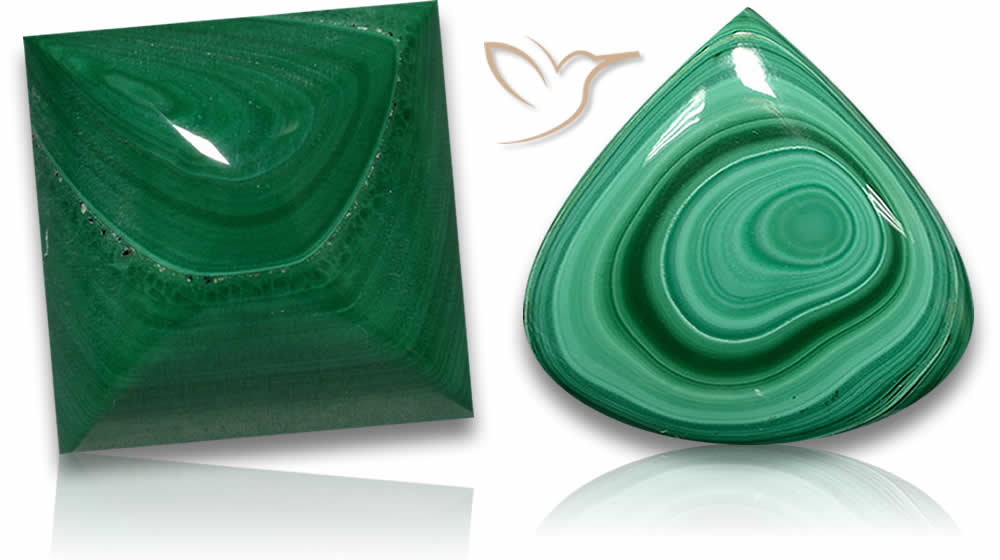African Malachite Gems: Beauty & Origins

African Malachite gems are a true marvel of nature. Their stunning beauty and mesmerizing colors never cease to amaze us. Malachite has an extensive history in the world of gemstones and continues to mesmerize people worldwide. In this section, we will explore the origins of Malachite and delve into its unique characteristics that make it a prized possession amongst gem enthusiasts.
Feel free to explore our current stock of natural Malachite gemstones for sale right here.
Key Takeaways:
- Most high quality Malachite is found in Africa.
- African Malachite gems boast of captivating colors and mesmerizing beauty.
- The extensive history of Malachite continues to fascinate people worldwide.
- We will explore the unique characteristics and properties of Malachite that make it a prized possession.
- Stay tuned to uncover the rich mining locations of Malachite in Africa, rare Malachite deposits, and famous Malachite gemstones and exquisite jewelry designs that showcase the beauty and rarity of this fascinating gem.
Understanding Malachite Gemological Properties
Malachite is a unique green-colored gemstone that is coveted by both collectors and jewelry lovers. Its unique color variations and other gemological properties make it a popular choice for various types of jewelry, including pendants, earrings, and bracelets.
One of the most striking characteristics of Malachite is its vibrant green color, which can range from a pale green to a deep, intense shade. This color comes from the copper carbonate mineral that forms the basis of the stone.
Another key aspect of Malachite's gemological properties is its hardness, which ranges from 3.5 to 4 on the Mohs scale. This relative softness makes it easy to carve and shape, but it also requires careful handling to prevent scratches and other damage.
In addition to its color and hardness, Malachite is also known for its unique banding patterns, which form concentric rings of light and dark green. These patterns make each piece of Malachite truly one-of-a-kind.
"The unique color, hardness, and banding patterns of Malachite make it a sought-after gemstone prized by collectors and jewelry lovers alike."
In summary, the gemological properties of Malachite give it a rare beauty that's hard to find in other gemstones. Its remarkable color variations, unique banded patterns, and relative softness all contribute to its appeal and value.
The Rich Mining Locations of Malachite in Africa
Malachite is primarily mined in Africa, with significant deposits found in the Democratic Republic of Congo, Zambia, Namibia, and South Africa. However, the Congo region is considered the most significant source of high-quality malachite gems globally. The Katanga Province in the southern part of the country is home to significant deposits of this precious gemstone.
The mining processes involved in extracting Malachite from the mines in Africa can be both complex and dangerous. Miners extract the gemstone from deep within the earth, using heavy machinery to drill and excavate the tunnels. The mining process is labor-intensive and often performed by hand using chisels and hammers to extract the ore.
The mining processes vary, but most of the Malachite in Africa is mined using tunnel mining or open-pit mining. Tunnel mining is the most common process in the Congo region, where workers carve out tunnels deep underground to reach the gems. Open-pit mining involves digging large open pits to extract the ore.
After extracting the gemstone, it undergoes various processes, including cleaning, sorting, and cutting and polishing to enhance its beauty and value. These processes need skilled labor and advanced technology to produce a quality gemstone that is then sold to international markets.
Malachite from Congo is a coveted gemstone due to its vibrant green color and unique patterns that make each gemstone distinctive. Its origin and unique beauty make it a favorite amongst designers and collectors worldwide, creating a significant demand for the stone in the global market.
Famous Malachite Gemstones and Jewelry Designs
Malachite's mesmerizing beauty and unique characteristics have made it a popular gemstone in the world of jewelry design. With a long history of use in ornamental objects, Malachite has been incorporated into some of the most stunning and renowned jewelry pieces throughout history.
One exceptional example is the Malachite Room in the Hermitage Museum in St. Petersburg, Russia. It was designed in the late 1830s and Empress Alexandra Fyodorovna, the wife of Tsar Nicholas I, used it as her drawing-room. The room is entirely adorned with Malachite, from the columns to the vases and fireplace, showcasing the exquisite beauty and value of this gemstone.
Malachite's distinct green hues and swirling patterns make it an ideal gemstone for creating bold and eye-catching jewelry pieces. From rings and necklaces to bracelets and earrings, the possibilities for incorporating Malachite into jewelry designs are endless.
For a modern twist, designers have experimented with unique cuts and shapes of Malachite, such as the pear-shaped Malachite pendant by Stone and Strand. This fresh and contemporary approach to Malachite jewelry design showcases the gemstone's versatile beauty and adds a touch of individuality to conventional jewelry pieces.
Malachite's popularity in jewelry design is a testament to the gemstone's enduring allure and timeless beauty.
Rare Malachite Deposits in Africa
Malachite deposits in Africa are highly valued for their rarity and exceptional beauty. The gemstone is found in ancient copper mines, where it forms in layers of vibrant green hues amidst copper ore.
The most significant deposits of malachite in Africa are located in the Democratic Republic of Congo, Zambia, and Angola. These deposits are rare and highly sought after by gem enthusiasts and collectors alike.
The geological formation of malachite in Africa can be attributed to a combination of factors, including volcanic activity, weathering, and hydrothermal alteration. The unique blend of these conditions has created some of the most astounding malachite deposits in the world.

Malachite is often formed in nodules and botryoidal shapes, making it a popular choice for jewelry and decorative objects. Its unique patterns and vibrant green color make it a highly prized gemstone.
The Beauty of Congolese Malachite
The Democratic Republic of Congo is home to some of the most exquisite malachite in the world. The Copperbelt region of the country is particularly renowned for its unparalleled malachite deposits.
Congo malachite is characterized by its deep green color, which is often layered with unique patterns and banding. It is often cut into smooth cabochons or shaped into intricate beads for use in jewelry.
| Characteristic | Congolese Malachite | Zambian Malachite |
|---|---|---|
| Color | Deep green with unique patterns | Lighter green with concentric banding |
| Texture | Botryoidal, nodular | Massive |
| Use in Jewelry | Cabochons, beads, pendants | Beads, pendants, carvings |
Zambian malachite, on the other hand, is characterized by its lighter green color and concentric banding. It is often used to create beads, pendants, and carvings.
Regardless of its origin, malachite remains a highly prized gemstone that continues to captivate and enthrall gem enthusiasts around the world.
The Journey of Malachite from Africa to the World
Malachite is a valuable gemstone that is primarily found in African countries such as the Democratic Republic of Congo, Zambia, and Zimbabwe. The Congo region, in particular, is known for producing some of the best-quality Malachite in the world.
The mining processes involved in extracting Malachite from the earth are complex and require a significant amount of labor. The first step involves locating the ore deposits and extracting them from the earth. Next, the ore must be crushed and milled into a fine powder, which is then treated with chemicals to extract the copper content. After the copper has been removed, the remaining material is processed to create raw Malachite.
Raw Malachite is generally not suitable for use in jewelry or other decorative items as it is often quite brittle and porous. Therefore, it must be stabilized to improve its durability and enhance its color. There are several methods of stabilizing Malachite, including the use of epoxy resins and wax treatments. Once stabilized, the Malachite can be cut and polished to create beautiful gemstones.
The Global Gem Market
Once the Malachite has been transformed into gemstones, it is ready for distribution to the global gem market. This market is highly competitive, and jewelers around the world are always on the lookout for unique and high-quality gemstones such as Malachite. It is typically sold to wholesalers who then sell it to retailers or directly to jewelers.
The journey of Malachite from the mines of Africa to the world is a fascinating one. The care and attention given to every step of the process, from mining to production, contribute to the overall quality and beauty of the gemstone. With its rich history and stunning appearance, Malachite remains a highly prized gemstone for collectors and jewelry enthusiasts around the world.
Conclusion
In conclusion, we hope this article gave you a deeper understanding of the allure and origins of African Malachite gems. From its unique gemological properties to rare deposits found in Africa, Malachite continues to captivate gem enthusiasts worldwide.
We explored the different mining locations, particularly in the Congo region, and gained insights into the mining processes involved in extracting this precious gemstone. We also highlighted some famous Malachite gemstones and providing unique ideas for incorporating Malachite into stunning jewelry pieces.
Finally, we followed the journey of Malachite from its mining locations in Africa to becoming a part of the global gem market. The processes involved in transforming raw Malachite into beautiful gemstones make it a valuable commodity in the world of jewelry.
Experience the enchanting allure of Malachite, appreciate its unique charm as a gemstone from Africa, and consider adding it to your collection.
FAQ
What are the gemological properties of Malachite?
Malachite is a green copper carbonate mineral that is known for its vibrant green color. It has a Mohs hardness of 3.5 to 4, which means it is relatively soft compared to other gemstones. Malachite is also known for its unique banded patterns and high luster.
Where are the mining locations for Malachite in Africa?
Malachite is primarily mined in various locations in Africa, with the Congo being a prominent region for its extraction. Other African countries with known Malachite deposits include Zambia, Namibia, and the Democratic Republic of the Congo.
What are some famous Malachite gemstones and jewelry designs?
There are several famous Malachite gemstones and jewelry designs that showcase the beauty and uniqueness of this gem. One notable example is the Malachite Room in the Hermitage Museum in Russia, which features intricate panels made entirely of Malachite. Additionally, Malachite is often used in jewelry designs, such as earrings, necklaces, and rings, due to its appealing green color and distinctive patterns.
Are Malachite deposits in Africa rare?
While Malachite can be found in various locations in Africa, truly exceptional and rare Malachite deposits are relatively uncommon. The Congo region, in particular, is known for producing high-quality Malachite with unique banding patterns and intense green coloration.
How is Malachite mined and processed?
Malachite is typically mined using both underground and open-pit mining methods, depending on the specific location and deposit. Once extracted, the raw Malachite undergoes a series of processes to transform it into a gemstone. These processes may include cutting, polishing, and shaping to enhance its beauty and prepare it for use in jewelry.

